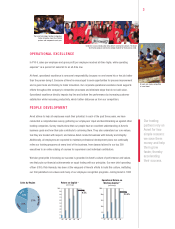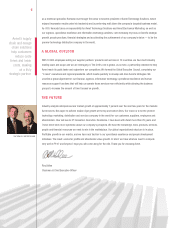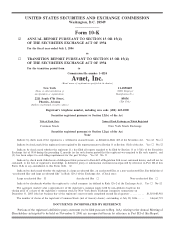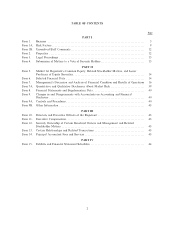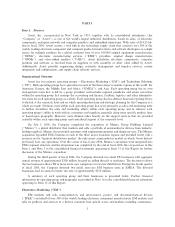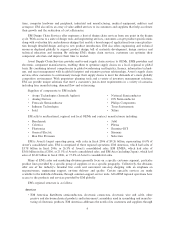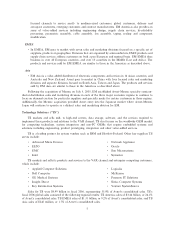Avnet 2006 Annual Report Download - page 15
Download and view the complete annual report
Please find page 15 of the 2006 Avnet annual report below. You can navigate through the pages in the report by either clicking on the pages listed below, or by using the keyword search tool below to find specific information within the annual report.Item 1A. Risk Factors
Forward-Looking Statements And Risk Factors
This Report contains forward-looking statements with respect to the financial condition, results of
operations and business of Avnet, Inc. and subsidiaries (""Avnet'' or the ""Company''). These statements are
generally identified by words like ""believes,'' ""expects,'' ""anticipates,'' ""should,'' ""will,'' ""may,'' ""estimates''
or similar expressions. Forward-looking statements are subject to numerous assumptions, risks and
uncertainties.
Avnet does not undertake any obligation to update any forward-looking statements, whether as a result of
new information, future events or otherwise.
Factors that may cause actual results to differ materially from those contained in the forward-looking
statements include the following:
An industry down-cycle in semiconductors could significantly affect the Company's operating results as a
large portion of our revenues come from sales of semiconductors, which is a highly cyclical industry.
The semiconductor industry historically has experienced periodic fluctuations in product supply and
demand, often associated with changes in technology and manufacturing capacity, and is generally considered
to be highly cyclical. During each of the last three fiscal years, sales of semiconductors represented over 50%
of the Company's consolidated sales, and the Company's revenues, particularly in the Company's Electronics
Marketing group, closely follow the strength or weakness of the semiconductor market. While the semicon-
ductor industry has strengthened recently as compared with the downturn experienced in 2001 and 2002, it is
uncertain whether this improvement will continue and future downturns in the technology industry,
particularly in the semiconductor sector, could negatively affect the Company's operating results in the future
and negatively impact the Company's ability to maintain its current profitability levels.
Failure to maintain its relationships with key suppliers could adversely affect the Company's sales.
One of the Company's competitive strengths is the breadth and quality of the suppliers whose product the
Company distributes. However, sales of products and services from two of the Company's suppliers, IBM and
Xilinx, accounted for approximately 16% and 10%, respectively, of the Company's consolidated sales in fiscal
year 2006. Management expects IBM and Xilinx products and services to each account for over 10% of the
Company's consolidated sales in fiscal year 2007. The Company's contracts with its suppliers, including those
with IBM and Xilinx, vary in duration and are generally terminable by either party at will upon notice. To the
extent IBM, Xilinx or a group of other primary suppliers is not willing to do business with the Company in the
future, the Company's business and relationships with its customers could be materially, adversely affected
because its customers depend on the Company's distribution of electronic components and computer products
from the industry's leading suppliers. In addition, to the extent that any of the Company's key suppliers
modifies the terms of their contracts, including, without limitation, the terms regarding price protection, rights
of return, rebates or other terms that protect the Company's gross margins, it could materially, adversely affect
the Company's results of operations, financial condition or liquidity.
The Company may not have adequate or cost-effective liquidity or capital resources.
The Company's ability to satisfy its cash needs depends on its ability to generate cash from operations and
to access the financial markets, both of which are subject to general economic, financial, competitive,
legislative, regulatory and other factors that are beyond the Company's control.
The Company may need to satisfy its cash needs through external financing. However, external financing
may not be available to us on acceptable terms or at all. As of July 1, 2006, Avnet had total debt outstanding
of $1.23 billion under various notes and committed and uncommitted lines of credit with financial institutions.
The Company needs cash to make interest payments on, and to refinance, this indebtedness and for general
corporate purposes, such as funding its ongoing working capital and capital expenditure needs. Under the
terms of any external financing, the Company may incur higher than expected financing expenses and become
9


